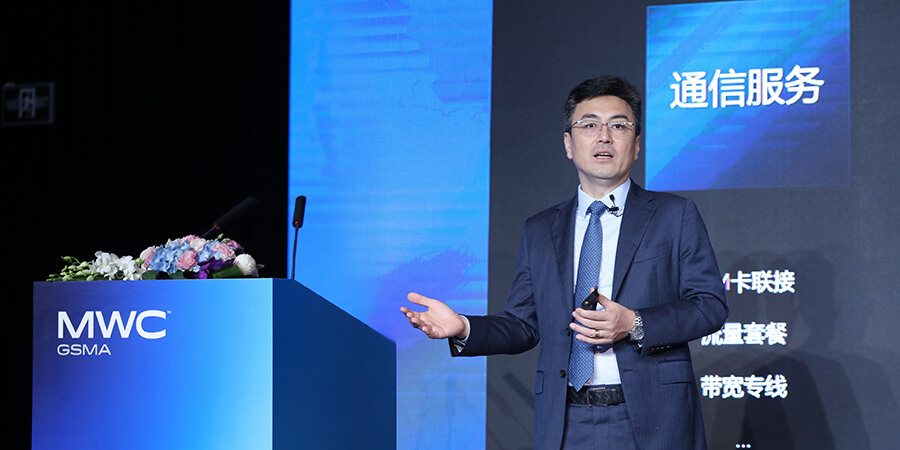Currently, the digital economy is a key driver of growth in major overall economies around the world. It is becoming a key force in restructuring global resource elements, reshaping global economic structures and changing global competition.
Focusing on the topic of accumulating innovation’s potential as well as the new momentum of digital intelligence within industry development’s transformation, Richard Liu, President of Global Carrier Marketing and Solution Sales at Huawei, delivered a keynote titled “Building Innovation Momentum to Boost Digital and Intelligent Transformation” during MWC Shanghai 2023.
According to Huawei’s Smart Economy research report, it is estimated that by 2025, roughly 55% of economic growth will be driven by the digital economy. The overall scale of the digital economy will reach US$23.6 trillion, with its share of global GDP rising to 24.3% from 15.2% in 2020.
Over 170 countries have launched their own digital strategies, including Germany, UAE, China, Brazil, South Africa and Japan. Because of this focus, global digital transformation spending will reach US$3.4 trillion by 2026.
“The rapid development of the digital economy is inseparable from investment in digital transformation in all walks of life,” said Liu.
Carriers Build Huge Innovation Momentum
In the ICT industry, carriers have always been the leaders and enablers of digital transformation. Operators have not only continuously optimized and accumulated their own innovation capabilities during digital transformation but also enabled digital upgrades across industries, accumulating huge innovation potential.
Liu highlighted that network facilities and ubiquitous gigabit networks are the foundation for the emergence of consumer digital business services.
60% of carriers have changed from providing simple voice services to providing ubiquitous gigabit services to consumers and implementing intelligent interactions. There are currently 243 commercial 5G networks supporting these services for over 1 billion 5G users.
Enterprises are also moving towards digital production — from digital offices to digital marketing and customer service — supporting key production application scenarios such as automated guided vehicles (AGV) and programmable logic controllers (PLC).
According to Liu’s presentation, carriers currently provide 170,000 5G private lines worldwide, and there are 1.845 billion cellular IoT connections in China alone. Combining connectivity and computing, as well as highly reliable production networks, carriers are accelerating the digital transformation of enterprises.
Converting Innovation Momentum Into Growth
“Facing the new wave of digital intelligence, we believe that we should work with carriers to build three new digital transformation capabilities,” Liu specified.
Digital infrastructure: Transforming ICT synergies into capabilities will elastic integrate strategic resources. Powerful connectivity capabilities, such as 5G, IPv6 and all-optical, as well as diversified computing power, are new advantages for carriers’ digital transformation.
Moreover, digital infrastructure will move from connectivity to connectivity + computing. As a result, connections are moving toward 1000 Mbit/s uplink, 10Gbps, downlink and intelligent-native capabilities. Combined with connectivity capabilities, new requirements emerge, including cloud-network synergy, cloud-edge collaboration and cloud-device synergy.
Digital operations: Converting massive data into capabilities will agilely address complex needs. Combining data aggregation and intelligence, data can create a greater value in carriers’ operations.
With the continuous iteration of various big data processing technologies, data quality is improved. With AI technologies in various office and production scenarios, both data-processing platforms and service-enabling platforms are evolving towards intelligence.
The blessing of intelligence: accelerates the transfer of data in production and life activities; enables smart operations throughout the whole process and business; doubles experience and efficiency; and continuously innovates operation models.
Digital services: Turning advantageous services into capabilities will quickly stimulate innovation. Carriers can continuously evolve and provide more creative digital services, extending beyond consumers to governments, enterprises and emerging customers as well.
There are three keys to success in the digital service world: mastering the user entrance, providing the ultimate experience and closed-loop transaction flows. This will bring more unique and stable digital services, a more secure user experience and ultimately more secure transactions.
5G New Calling: A Brand-New Digital Experience
Liu emphasized the “5G New Calling” capabilities in the process of digital service transformation. Based on the three capabilities of ultra-HD, intelligence and interaction, making the entry advantages of SIM cards are more stable.
These 5G New Call capabilities utilize new content, such as emoticons, subtitles, translation, AR/VR and AI, to generate new applications, including ultra-HD video, intelligent translation, fun calls and multi-party video, ultimately enriching the user experience.
With the support of mobile payment, 5G New Call further ensures the security of transaction activities in various life scenarios, such as overseas travel, financial transactions, manufacturing and logistics.
Huawei’s Strategic Vision for Digital Transformation
From Huawei’s perspective, there’s a clear strategic vision and goals for transformation, which together can lead to: identifying the breakpoints and weaknesses in the core operation processes; transforming operations into business services; streamlining data flow; carrying out intelligent upgrades to gradually realize the digitalization of equipment and operations; and establishing a digital operation platform.
“Huawei will continue to work with the industry to promote intelligent digital transformation and accelerate the transformation of innovation potential into the driving force of industry development,” concluded Liu.
By Elvi Correos, senior journalist, Telecom Review







